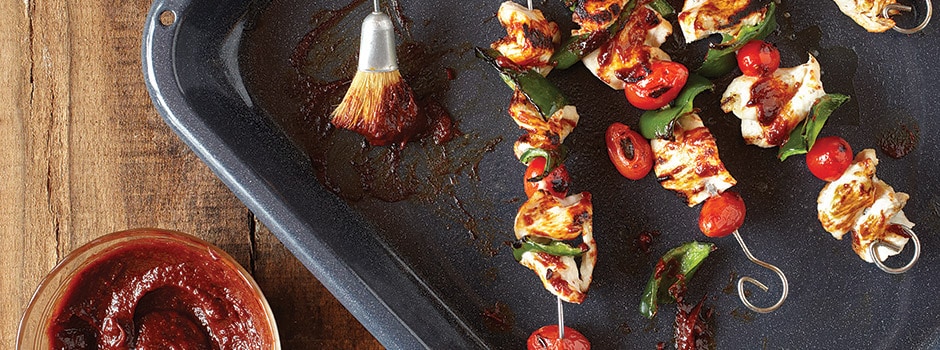Smoking is a type of barbecuing, or slow cooking a food over low heat. Personal preferences and equipment determine what foods you choose to barbecue or smoke. Smoking imparts a pleasingly deep and woody flavor into foods, so a smoky flavor is sometimes added to sauces and vegetables; but true barbecuing and smoking is really only done on big cuts of meat, like pork butts, whole chickens, brisket and racks of ribs. An understanding of the pros and cons of smoking vs. barbecuing will help you decide what's best to serve your guests.
Defining Moments
Barbecue doesn't mean foods grilled on hot coals and slathered in a sauce, but rather a method of slow cooking meat itself. Usually it refers to a process by which meat is prepared over a wood or charcoal fire at a low heat of 200 to 250 degrees. Tough meats are usually chosen for the barbecue because long cooking over low heat helps break down the meat's collagen, resulting in a silky, fall-off-the-bone serving.
Smoking is a barbecuing process that occurs when food is cooked with indirect heat at a temperature, usually below 200 degrees. Smoking also has come to mean adding a smoky flavor to foods, such as with liquid smoke.
Equipment Considerations
For a true barbecuing experience, you need something that can replicate a pit – whether that's a grill, a charcoal burner with a lid or a fire pit. The heat is indirect so you don't have to turn the meat, but during barbecuing you do need to lift the lid to replace the coals. The downside of this process is that it then subjects the meat to the air and makes it dry out.
A smoker requires a closed container too, but you don't have to adjust the meat while it's cooking to move the coals. This can lead to a moister, more succulent final product – especially when it comes to lean meat cuts and poultry. The con is that that you will need an external heat source attached to your cooking vessel to create the smoke. To keep the heat source at a constant temperature, which is necessary if you want to smoke your food rather than burn it, you may need to fiddle with your heat source regularly – adding more wood and stirring the coals. If you’re serious about smoking, purchase a smoker, which is especially made for the task and keeps the temperature inside relatively constant. This means less work for you as your meat cooks, but an additional monetary investment.
Flavor
Smoked foods take on a distinct flavor, usually of the wood used during the cooking process. If you enjoy the taste of hickory, cherry or apple woods infusing your meat, smoking is for you. Note that smoking can create an off-putting dish if you use mesquite, which can be too pungent for many guests, and sap tree wood – such as pine – which can ruin food due to flare-ups and its slight poisonous quality. Smoked meats also tend to be moister than barbecued or grilled foods and more readily fall off the bone.
You can impart a smoky flavor during a barbecue if you use wood on a charcoal or wood grill; not all grills allow for wood, though. Food takes on a more neutral fiery taste if you choose charcoal or gas.
Adding liquid smoke to food – from potato salad to meat marinade – to mimic the flavor of long, slow cooking is simple, but can overwhelm a dish so the food tastes artificial and processed. Liquid smoke works well to flavor sauces and on vegetables, such as summer squash and bell peppers, that don’t benefit from spending hours in a closed smoker.
